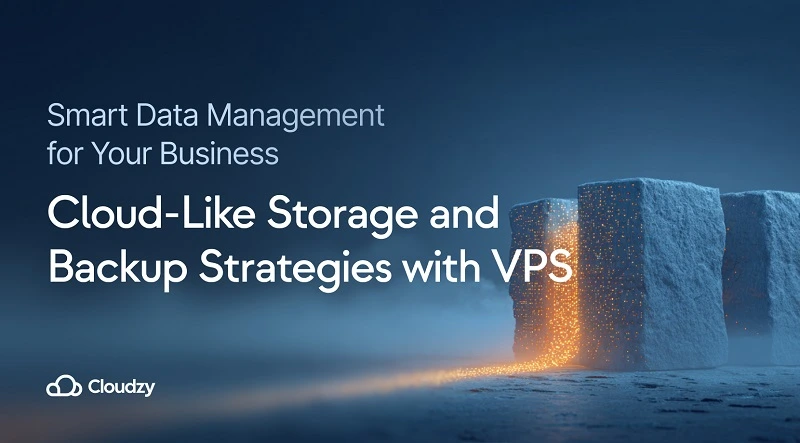VPS for secure business data management is the strategy I recommend whenever a company decides it’s time to stop juggling files across laptops, email attachments, and half‑forgotten USB drives. A well‑planned VPS for a secure business data management model turns a single virtual server into a tidy home for every contract, graphic, and spreadsheet your team relies on. In this guide, I’ll share a practical roadmap that blends real‑world experience—plus clear guardrails for security—so you can build a system that simply works.
Your Company Data: A Valuable Asset to Manage Wisely
Running day‑to‑day operations without a clear data plan is like keeping receipts in random drawers—you’ll find the right one eventually, but only after far too much digging. A company file storage VPS solution offers a single, consistent location, so everything lives under one roof.
Before diving into configuration, map out what your business data actually looks like:
- Operational records: invoices, purchase orders, HR docs.
- Project assets: design files, code repositories, and marketing collateral.
- Reference libraries: style guides, SOPs, vendor agreements.
That inventory helps shape access control lists, version control rules, and the future data recovery plan. I like to revisit the list every quarter—data grows faster than we think.
Using a VPS as Your Secure, Central Data Hub
A properly configured VPS for secure business data management gives you three pillars: performance, isolation, and predictable costs. With a VPS, hardware is abstracted yet dedicated, so loud neighbors won’t starve your workloads.
Pair that with a self‑hosted Nextcloud stack or an S3‑compatible object store, and you’ll have a flexible space to upload, share, and sync. When it’s time to buy a cloud server, look for predictable IOPS and snapshot support—those two specs set the tone for smooth file syncs and fast rollbacks.
Under the hood, the same VPS for secure business data management setup is great for keeping data lifecycle management straightforward:
- Snapshots form the foundation of version control (basic).
- Scheduled pruning keeps stale archives out of sight.
- Offsite backups complement on‑box snapshots for real redundancy.
All three steps deliver a lean, centralized data storage environment without adding extra appliances.
Smart Idea 1: Organizing Your Business Files for Easy Access
A successful data organization strategy VPS starts with folder logic everyone understands. Spend an afternoon defining a short, flat hierarchy—Marketing, Sales, HR—then branch only when absolutely necessary.
A clean folder tree cuts search time in half and leaves more mental space for real work.
Suggested Quick‑Start Rules:
- Keep top‑level directories function‑based, not person‑based.
- Use ISO dates (YYYY‑MM‑DD) for time‑stamped folders.
- Lock critical docs as read‑only to preserve integrity.
Once that baseline is in place, reinforce it by onboarding new hires with a short SOP and a visual map. This habit cements VPS for secure business data management culture from day one.
Smart Idea 2: Automated & Secure Backups to Another VPS (or Cloud Storage)
Backups are the seatbelt of IT. Your first VPS may host the live data, but a second target—either another budget VM or S3 bucket—handles long‑term copies. The pairing delivers a reliable VPS backup for business that survives data‑center outages and accidental deletions.
| Backup Layer | Target | Frequency | Retention |
| Snapshot | Primary VPS | Hourly | 24 hours |
| Offsite Sync | Secondary VPS | Nightly | 14 days |
| Archive Tier | Object Storage | Monthly | 12 months |
The table above illustrates a simple cadence. Feel free to stretch the intervals, but never skip the offsite step. Without it, you’re one local disaster away from a headache.
After automating jobs with rsync or Borg, the test restores every few weeks. A reliable VPS backup for business only counts if it actually restores.
Want a high-performance Cloud VPS? Get yours today and only pay for what you use with Cloudzy!
Get Started HereControlling Who Can Access Which Data
Access rules keep private information from floating around Slack or personal drives. Start by grouping team members by role, then attach folders to those groups. Lightweight access control lists cover 90 percent of scenarios, especially once you tag every directory with a clear owner and revision policy.
To cover the last ten percent, I weave in a small‑footprint IAM layer—Keycloak or Authentik both fit nicely. An identity provider lets everyone sign in with the same SSO credentials they already trust, while I keep root SSH keys tucked inside a password manager. From there, map each role to a set of least‑privilege policies, so Finance sees budgets, Developers see source code, and Marketing sees brand assets—no more, no less.
I also feed the IAM audit logs into broader cybersecurity software, so alarms pop up if an account suddenly requests hundreds of files at 3 a.m. Pair that with two‑factor SSH logins and SFTP chroot jails, and you have concentric rings protecting your VPS for secure business data management without dragging down day‑to‑day work.
Before signing off, separate personal data from public marketing assets on your company file storage VPS solution; cross‑pollinating the two invites phantom GDPR headaches. A simple data‑classification tag stored in an extended file attribute keeps the boundary bright.
Meeting Data Compliance Needs with Your VPS Setup
Regulations feel daunting, yet a sensible VPS for secure business data management approach already handles most checkboxes:
- Centralized data storage makes discovery requests simple.
- Daily offsite backups strengthen the documented data recovery plan.
- Encryption at rest and in transit satisfies regional mandates.
If you serve EU clients, map processing activities and document gdpr compliance with VPS settings: key rotation schedules, breach notification paths, and data retention windows. Linking to your preferred Private Cloud Providers article helps stakeholders contrast shared versus isolated platforms.
A Few Advanced Touches I Like to Add
- Immutable snapshots: block modification to give ransomware nowhere to hide.
- File activity reports: weekly CSVs reveal who moved what.
- Public Providers research: comparing storage costs keeps budgets sane.
Together, these tweaks round out an expert‑level, VPS for secure business data management framework while staying approachable.
Final Thoughts
Adopting VPS for secure business data management is less a tech project, more a commitment to order. By pairing a well‑structured folder tree, a data organization strategy VPS with logical roles, and a reliable VPS backup for business, you’ll spend far less time searching for files and far more time using them. When it’s time to expand—perhaps you’re considering a Nextcloud VPS or evaluating another VPS server cloud—the same principles scale neatly: isolate, automate, and document.
With a clear plan, your files stay safe, coworkers stay happy, and compliance auditors barely raise an eyebrow. And yes, that all starts with a single, well‑chosen VPS for secure business data management instance—the quiet powerhouse keeping your data right where you need it.



